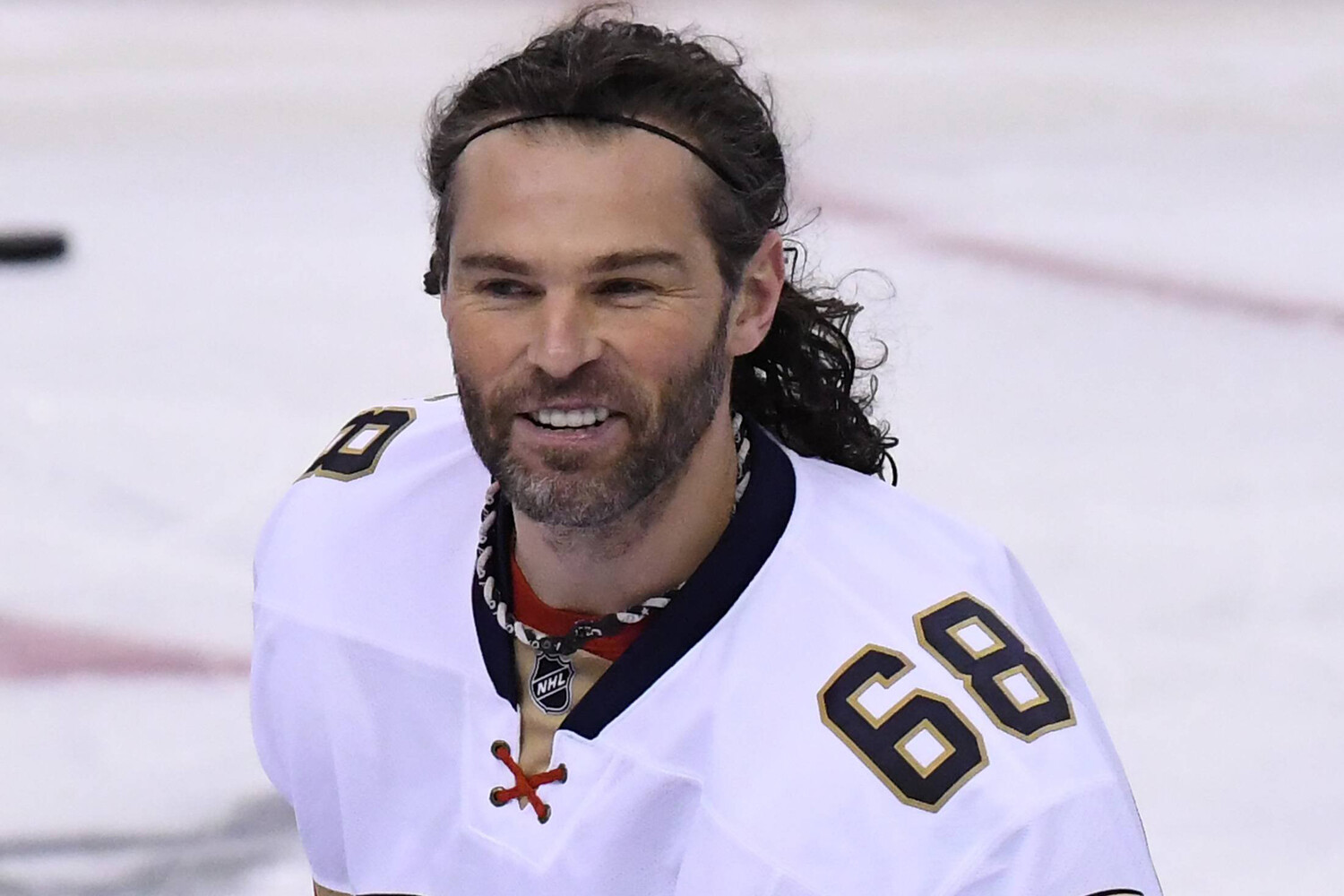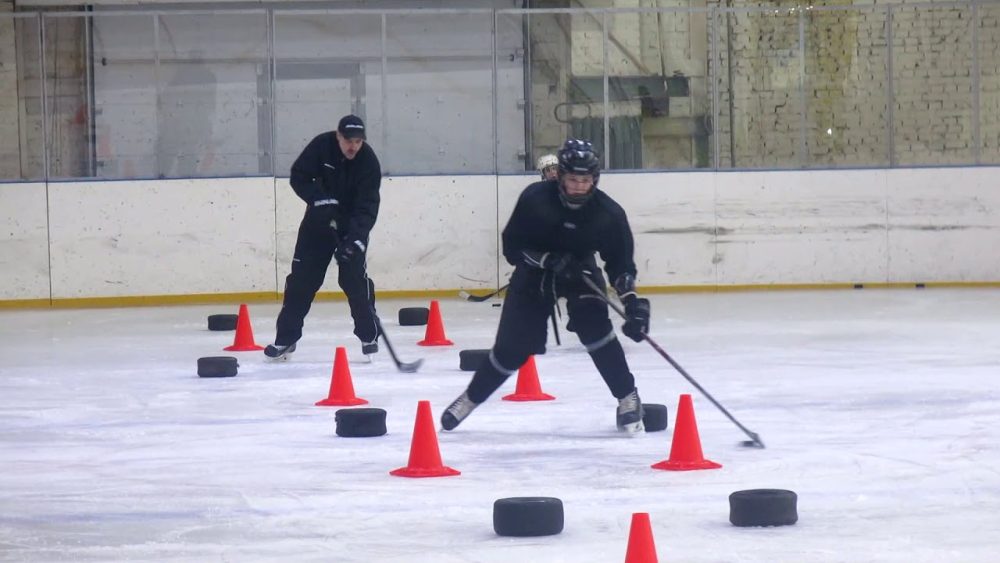In hockey, everything is decided in split seconds. One shot — and 160 grams of rubber fly into the net at the speed of a car. In this crucial moment on the last line of defense stands the goaltender, whose position and reaction determine the outcome of the play. The center of gravity on the knee, lightning-fast movement, precise glove save — every element of his game must be flawless. The cost of an error is too high, there is no second chance. That is why the various goaltending styles in hockey are so important, as the diversity of styles holds the key to the team’s last line of defense strategy.
Butterfly: the style of reactive minimalism
The Canadian school introduced the first prototype of the butterfly style on the ice back in the 1950s, but it truly took shape in the 1990s. Legends like Patrick Roy abandoned the stand-up style and started dropping to their knees, covering the lower part of the net and nullifying low shots.

The technique of a hockey goaltender in this approach requires powerful hip drive, stable pads with a fast-drop system, and strong control of movement. The center of gravity is always on the inside edge of the skates. The goaltender drops into the butterfly position before the shot — and manages to cover the net area even before the shooter completes the wind-up.
It enhances control over the lower part of the net but requires fantastic physicality. With regular shots from the slot area, the load on the knee increases to 60% of the body’s total weight. Out of 10 shots from the hash marks, 8 are saved if the movement and timing are executed precisely. In the top NHL leagues, the butterfly style demonstrates an efficiency level of 92–93% with 20+ shots per game.
Stand-up: atavism or a veteran’s arsenal
Stand-up — straightforward and archaic, like a vinyl record player in the era of Spotify. The style utilizes the goaltender’s standing position, without crouching and without fully isolating the lower part of the net. It is based on reaction, distance control, and proper stance. The era of Håkan Södergren and Glenn Hall.
Today, the stand-up stance is used in hybrid tactics, especially for long-range shots. It facilitates movement and reduces joint wear. However, its effectiveness sharply declines in the dense low slot area — it does not work well under high traffic density.
Hybrid: an option for the advanced
The hybrid style incorporates the best of both the butterfly and stand-up styles. The goaltender makes instant decisions: dropping for low shots, waiting for fakes, attacking for rebounds. It’s not about form but function.
It utilizes depth of position, changes stance levels, actively moves within the crease area. Special attention is given to mid-height glove saves and stick control on puck deflections.
The gameplay model requires a maximum number of skills, which is why in goaltender training systems, the hybrid approach is only considered at an advanced level. The area between the knee and elbow is the most vulnerable. The hybrid style covers it dynamically, combining catching, dropping, and pivoting on the edge of the paint.
Reactivity, technique, analytics: choosing by model
The choice of approach is dictated not only by style but also by the goaltender’s model parameters. Height, flexibility, balance, and reaction determine the success of each tactic. For example, for a height of 185+ cm and an arm span of 180 cm or more, the butterfly style provides maximum coverage. Shorter goaltenders should adapt a combined approach and enhance their glove saves.
One style is not a rule
NHL systems have long ceased to rely on “pure” models. One match — three approaches. The result is what matters.
Examples of top performers:
- Igor Shesterkin (Rangers): combines stand-up reactivity and early drop mode for low attacks.
- Andrei Vasilevskiy (Tampa Bay): implements the butterfly style based on non-standard leg length and hip mobility, maintaining a save percentage above 91%.
- Carey Price (ex-Montreal): at his peak, combined all three styles, creating a hybrid matrix adapted to the current game.
It is the goaltender’s playing styles in hockey that determine the tactical pattern of the entire team. They dictate the behavior of defensemen, shape the pressing formation, and influence the speed of position changes in the zone.
Training and Development
Modern hockey academies pay close attention to goaltender training, including aspects such as biomechanics of falls, pad control technique, precise timing for puck saves, and movement training within the goaltender’s crease (triangle). Special emphasis is placed on the synchronicity of body movements and puck trajectory: even a 0.3-second delay in reaction can lead to a goal being scored.
A goaltender’s technique is built on refined micro-movements, such as the split and recover, which are practiced separately. A significant portion of training time (up to 60%) is dedicated to developing the skill of reacting correctly to sudden changes in the puck’s flight path after a rebound.
When a goaltender’s playing style in hockey affects the score
Team strategy revolves around the last line of defense. The goaltender is not just a blocker but the conductor of his zone. It is the goaltender’s playing styles in hockey that determine the pace, reaction, and resilience of the team against attacking waves.
The decisive factor is not the choice between butterfly or hybrid but the ability to control the entire goal area. The goaltender must control position, sense direction, anticipate shots. If playing style is the tool, then the thinking system is the arsenal.
With correct implementation of the hybrid approach, the probability of neutralizing a close-range shot reaches 87–90%. In conditions of numerical disadvantage, with proper positioning, the goaltender’s stance determines the team’s chances of saving the play. It’s not the style but the adaptability that distinguishes an elite performer.

Technique in Numbers: Precision, Not Art
The difference between an average and a top goaltender lies in the precision of execution. Proper movement helps reduce the available angle by 27%. Deviating the torso by more than 5° from the center poses a direct threat to the goal. High save percentages are not a result of a single system but a combination of details where pads cover the gap, the glove catches rebounds, and the knee does not drop a fraction of a second early.
Goaltender’s Playing Styles in Hockey: Conclusions
As the last line of defense, the goaltender plays a crucial role in a hockey club’s tactics, where his style becomes an integral part of the overall strategy. Today’s level of play requires the goaltender not just to master one style but to flexibly apply different approaches depending on the unfolding events, acting proactively and maximizing the use of his stylistic arsenal to ensure the team’s success.
 en
en  ru
ru  de
de  ar
ar  es
es  hi
hi  fr
fr  nl
nl  it
it  pt
pt  el
el 



